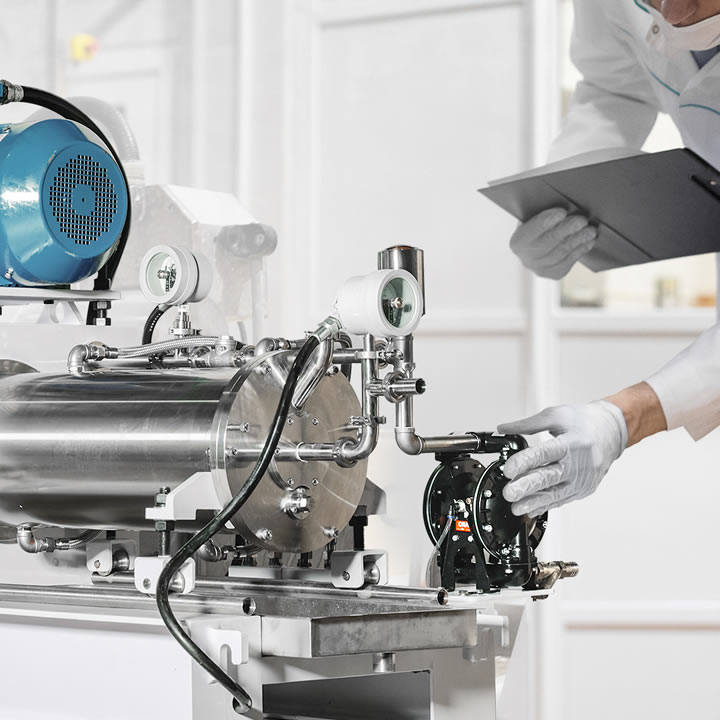In the vast world of industrial processes, efficient mixing equipment plays a crucial role in achieving homogeneous blends, emulsions, and suspensions. Among the various types of mixing equipment available, high-speed disperser machines stand out for their exceptional capabilities in dispersing and blending a wide range of materials.
This article explores the advantages of high-speed disperser machines and compares them to other common mixing equipment types, shedding light on their significance in diverse industries.
Understanding Mixing Equipment
Importance of Mixing in Industrial Processes
Mixing is a fundamental process used across multiple industries, including chemical, pharmaceutical, food and beverage, cosmetics, and paint. It involves combining two or more components to create a uniform product with consistent properties.
Successful mixing ensures that the desired physical and chemical characteristics are achieved, improving product quality and performance.
Types of Mixing Equipment
There are several types of mixing equipment available, each designed to suit specific applications and material properties. Some of the common types of mixing equipment include:
- High-Speed Disperser Machines
- Static Mixers
- Ribbon Blenders
- Paddle Mixers
- Planetary Mixers
- Homogenizers
- Fluidized Bed Mixers
- Conical Screw Mixers
- Continuous Mixers
Advantages of High-Speed Disperser Machines
Rapid Mixing
High-speed disperser machine, as the name suggests, excels in rapidly dispersing and mixing various substances.
The machines are equipped with a powerful motor and a specially designed impeller, which create high shear forces that break down agglomerates and ensure a uniform distribution of particles throughout the mixture.
This capability is particularly advantageous when dealing with solid-liquid systems or immiscible liquids.
Versatility
They can handle a wide range of materials, from low to high-viscosity liquids, semi-solids, and even some pastes. This flexibility makes them suitable for use in multiple industries, where different materials require unique mixing solutions.
Scalability
They come in various sizes, allowing for easy scalability of mixing processes. Whether it’s a small batch for research and development or a large-scale production process, high-speed disperser machines can be tailored to meet specific requirements.
Homogeneous Blends and Consistent Quality
Achieving a homogeneous blend is critical in many industries.
The machines ensure that all components are thoroughly mixed, resulting in consistent product quality. This is particularly crucial in the pharmaceuticals and food industries, where product uniformity and stability are paramount.
Reduced Mixing Time
Compared to some other mixing equipment types, high-speed disperser machines offer significantly reduced mixing times. The high shear forces generated by the impeller lead to quicker dispersion and blending, improving overall productivity and efficiency in manufacturing processes.
Easy Maintenance and Cleaning
Maintenance and cleaning of high-speed disperser machines are relatively straightforward, thanks to their simple design. Routine maintenance tasks, such as impeller replacement or lubrication, can be carried out with ease, minimizing downtime and production interruptions.
Ability to Handle Viscous Materials
Viscous materials can pose challenges in conventional mixing equipment, but the machines handle them effectively. The high shear forces created by the impeller help in breaking down the viscosity barrier, ensuring thorough mixing and dispersing.
Comparison with Other Mixing Equipment Types
Static Mixers
Static mixers are known for their continuous blending capabilities. However, they may not be as effective as high-speed disperser machines when dealing with materials with varying viscosities or when agglomerates need to be broken down.
High-speed disperser machines provide better control over the mixing process and allow for adjustments to achieve the desired blend.
Ribbon Blenders
Ribbon blenders are widely used for mixing dry powders or granules.
While they are efficient in their respective applications, they may not be suitable for liquids or pastes. High-speed disperser machines, on the other hand, excel in both liquid and solid dispersion, making them more versatile for a broader range of mixing tasks.
Homogenizers
Homogenizers are excellent for particle size reduction and creating stable emulsions.
However, they may not be as efficient in handling high-viscosity materials or in breaking down large agglomerates. High-speed disperser machines can effectively address these challenges, offering superior mixing capabilities in certain applications.
Applications of High-Speed Disperser Machines
Paints and Coatings Industry
In the paints and coatings industry, they play a pivotal role in achieving a smooth and consistent mixture of pigments, binders, and solvents. The high shear forces of the impeller effectively disperse pigment particles, preventing clumping and ensuring an even color distribution.
Pharmaceutical Industry
High-speed disperser machines are extensively used in the pharmaceutical industry for various processes, including the preparation of suspensions, emulsions, and gels.
These machines can uniformly disperse active pharmaceutical ingredients (APIs) into liquid carriers, ensuring precise dosing and enhancing the efficacy of the final product.
Cosmetics Industry
Cosmetic formulations often involve blending different ingredients with varying viscosities and compatibility challenges. High-speed disperser machines simplify this process by quickly dispersing and emulsifying the components, resulting in smooth and stable cosmetic products.
Adhesives and Sealants Industry
In the adhesives and sealants industry, they help ensure an even distribution of additives and fillers in the base material, leading to stronger and more reliable bonding properties.
Food and Beverage Industry
From sauces and dressings to beverages, high-speed disperser machines are used to achieve uniform mixtures, emulsions, and suspensions. Their ability to quickly disperse and blend ingredients allows for efficient production in the food and beverage sector.
High-speed disperser machines are indispensable tools in the realm of mixing equipment, offering numerous advantages over other types of mixers. From their rapid mixing and dispersing capabilities to their versatility in handling various materials, these machines have proven their worth in a wide range of industries.
The advantages of the machines, such as reduced mixing time, scalability, and the ability to handle viscous materials, make them a go-to choice for manufacturers seeking efficient and reliable mixing solutions.
As technology continues to evolve, we can expect further enhancements and innovations in mixing equipment.
However, the fundamental principles of high-speed disperser machines, their advantages, and their significance in industrial processes will continue to make them an integral part of the manufacturing landscape for years to come.

